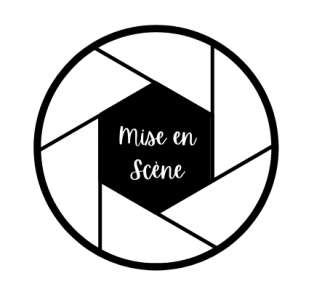His admiral work on Get Out (2017) and BlacKkKlansman (2018) established Jordan Peele as an eminent director and producer, and his most recent film secured his permanent place in the Hollywood Hall of Fame. Another horror feature, Us (2019) follows an American family who come under attack from malevolent doppelgängers. It was a critical and commercial success, earning $255 million at the international box office, and with good reason.
Certainly, any frame could contain a wealth of information in this visually gorgeous film, but as always I have chosen a pivotal moment in the narrative to explore. The still below represents the moment that the Wilson family recognises the dangerous abnormality of the situation. Formal elements collaborate to produce an image laden with meaning and fear.
Spoiler warning: I strongly recommend watching Us in its entirety before reading any further, as in this article I discuss connections between the frame and the plot.

It is the eerie scene above that greets Gabe Wilson when he opens the front door of his holiday home, having been told by his son that “There’s a family in our driveway”. As in most film frames, positioning here is conspicuous. The arrangement of the strange group clearly echoes the emblem of the ‘Hands Across America’ campaign, establishing the formation as a motif and foreshadowing the plan the Tethered will soon enact. While at this point in time viewers may be advocating ardently for Gabe to return indoors, the position of the family arguably justifies his bravado. Their distance from the camera creates the illusion of safety, as does their centre-right location in the frame; the drive visibly snakes around to the left, depriving them of a direct path to Gabe and the viewer. However, Peele reveals in the next minute or so that this is unimportant, as each character approaches the house from a different direction.
Light contributes equally to the creepiness of the scene, emanating from a meagre two streetlamps. Their location behind the family casts each member in shadow and creates an unnerving sense of ambiguity. The consequent facelessness of the strangers builds tension as the viewer awaits the revelation of their identities. One streetlamp, situated directly behind the family, throws their elongated shadows forward and portends both their entry into the home and their divulgence that they are in fact the Wilsons’ own spiritual shadows. Likewise, the other lamp which is further down the road hints that identical events are unfurling elsewhere in other households.
Delivering a social commentary as well as entertainment, Us contains a multitude of references to the irony and hypocrisy of some contemporary United States culture, for instance the empty value of items such as boats and backup generators that represent conspicuous consumption. I contend that the light in this frame functions similarly, alluding to the traditional American reverence for the institution of family. Softly shining down upon them, illuminating the backs of their heads, the lamp makes the group appear almost saintly. The film pitches families against families in the most literal sense, and the four protagonists belong to the Wilson quartet. All survive and, excluding the Tethered and the helicopter pilots, seem to comprise the only living people by the end of the film. The Wilsons constitute a fairly unconventional family (for example, Adelaide herself began as one of the Tethered, a fact that Jason learns and accepts), so perhaps Us does not vilify the notion of the nuclear family but advocates acknowledging the equal worth of less common household formations.
Us is an exceptional horror film that utilises tropes, archetypes, and formal elements that permit no doubt as to its genre. Peele employs positioning and light in the frame above to construct a fitting introduction to the Tethered and instil in the viewer a feeling of deep uneasiness. It makes us long to never meet our doppelgängers.


